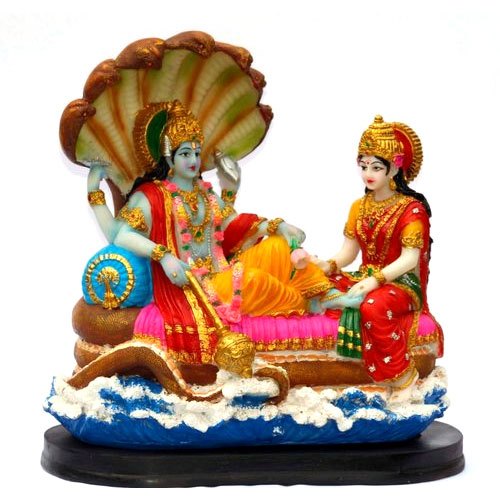
In the previous episode, we had witnessed Sage Vyaasa talking about the next “Punya-Kshetra” – The “Arbudha Kshetra” or commonly referred to as “Mount Abu” in the North-Indian state of Rajasthan. Here, Bhagawan Vishnu is in the form of a mountain, just like how we’ve witnessed Bhagawan Vishnu in the form of a huge lake at the “Pushkara Kshetra” or “Pushkar”. We’ve also witnessed that this “Arbudha Kshetra” or “Mount Abu” is one of the brothers of the great Himalayan mountains. Even today, Mount Abu is one of India’s most visited pilgrimage centres and whenever we get time, we should make sure to visit this beautiful paradise on earth.
Moving on further thus, Sage Vyaasa is now talking about the next “Punya-Kshetra” called “Praabhaasa Theertham” or “Praabhaasa-Kshetra”. This is the place from where Bhagawan Krishna transcended back to Vaikunta at the end of the great Krishna-Avatara. All of us might know this story as to how a hunter mistook Bhagawan Krishna’s toe to be a deer! Mistakenly thus, the hunter hits Bhagawan Krishna’s toe and with this, Bhagawan decides that His divine incarnation in this world is coming to an end. All these places that we’re talking about currently are in the western part of our “Bhaarata Desha”, in the Indian states of Rajasthan and Gujarat. Now, moving further west into Gujarat, and as we attain the western seashore, is the famous “Dwaaraka-Patnam”, which is the capital city of Bhagawan Krishna. Sage Vyaasa gives an extensive accord on the Dwaaraka city and how it was built. The Dwaaraka palace would resemble that of Indra’s palace in the “Swarga Lokha”, and Sage Vyaasa explains this beautifully. I’m not going into this discussion at this moment, because we’ve already spoken at length about this during our previous “Shrimad Bhaagawatha Puraana” project. Readers can have a glimpse of it at their own convenience. Thus, we can see here that Sage Naarada advises Yudishtra to go to Dwaaraka as part of his “Teertha-Yatra” and obtain the divine “Anugraha” of Bhagawan Krishna who is residing there.
Even today, we have the reminiscence of the Dwaaraka-Kshetra. We call that as “Pancha-Dwaaraka”. The first one is the “Bet-Dwaaraka”, where Bhagawan Krishna is referred to as “Rana-Chod-Rai”. We might be knowing this story – Bhagawan Krishna was running all the way from Mathura, and was being chased by Kaalayavana, who was King Jaraasandha’s brother. Since, Bhagawan Krishna was seemingly “running away” without fighting a war with Kaalayavana and Jaraasandha, He is referred to as “Rana-Chod-Rai” in this place. Next in the list is Gomati Dwaaraka, Dakur Dwaaraka, Kaankroli Dwaaraka and the most important one which is the “Sri-Naatha Dwaaraka”. Here, Bhagawan Krishna is referred popularly as “Shri-Nath ji” and this “Naatha-Dwaaraka” is again situated in the Indian state of Rajasthan. Thus, the five “Dwaaraka-Kshetras” are of extreme significance and all of us should compulsorily pay a visit to these places to obtain the divine “Anugraha” of Bhagawan Krishna! Thus, we can witness here that the western part of our Bhaarata Desha is extremely significant with enormous amounts of Punya-Kshetras lined up one after the other! Apart from the Vishnu Kshetras that we’re witnessing currently, there are Shiva-Kshetras too. There are a few Jyothirlinga-Sthalams such as Somanath, which is extremely revered and respected in Gujarat. Moving further east into Madhya Pradesh, we have the famous “Maha-Kaleshwar” temple in Ujjain, which has enormous significance. The presiding deity here is Bhagawan Shiva in the form of “Maha-Kaleshwar ji”. It is believed to be the center for time calculation during the yester-years. In other words, the local time at this temple was kept as the reference / benchmark for calculation of time at other places. In fact, this place called Ujjain is the birthplace of many eminent scholarly people of those times.
Moving on further west, Sage Vyaasa explains about the place where River Sindh goes and merges into the ocean. This place is none other than today’s Karachi city in Pakistan. This is an extremely significant place in our “Sanaatana Dharma” literature, but sadly today, this has been completely forgotten. In fact, Karachi is a great “Punya-Kshetra” and was adorned with a lot of temples, which were subsequently destroyed by certain forces, about which it is not worth talking even a single word! Of course, we shall pray to Bhagawan that this place too should regain its spiritual significance sooner or later!
Next, Sage Naarada is talking to Yudishtra about the famed Kurukshetra-Bhoomi, and how it is extremely significant like Pushkar in terms of “Dhaanam”, “Dharma”, and “Japa”. We should understand here that the Paandavas do not know as yet that the marque battle is going to take place in this very place of Kurukshetra! We’re still very early into the Mahabharata story and the war is far away still! Thus in this way, we’re witnessing Sage Naarada’s conversation going deep into the various “Punya-Kshetras” in the complete northern belt of our Bhaarata Desha. So for today, let us understand up to this point, and we shall continue this discussion further in the next episode as well! Stay tuned! 🙂
